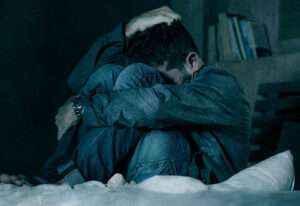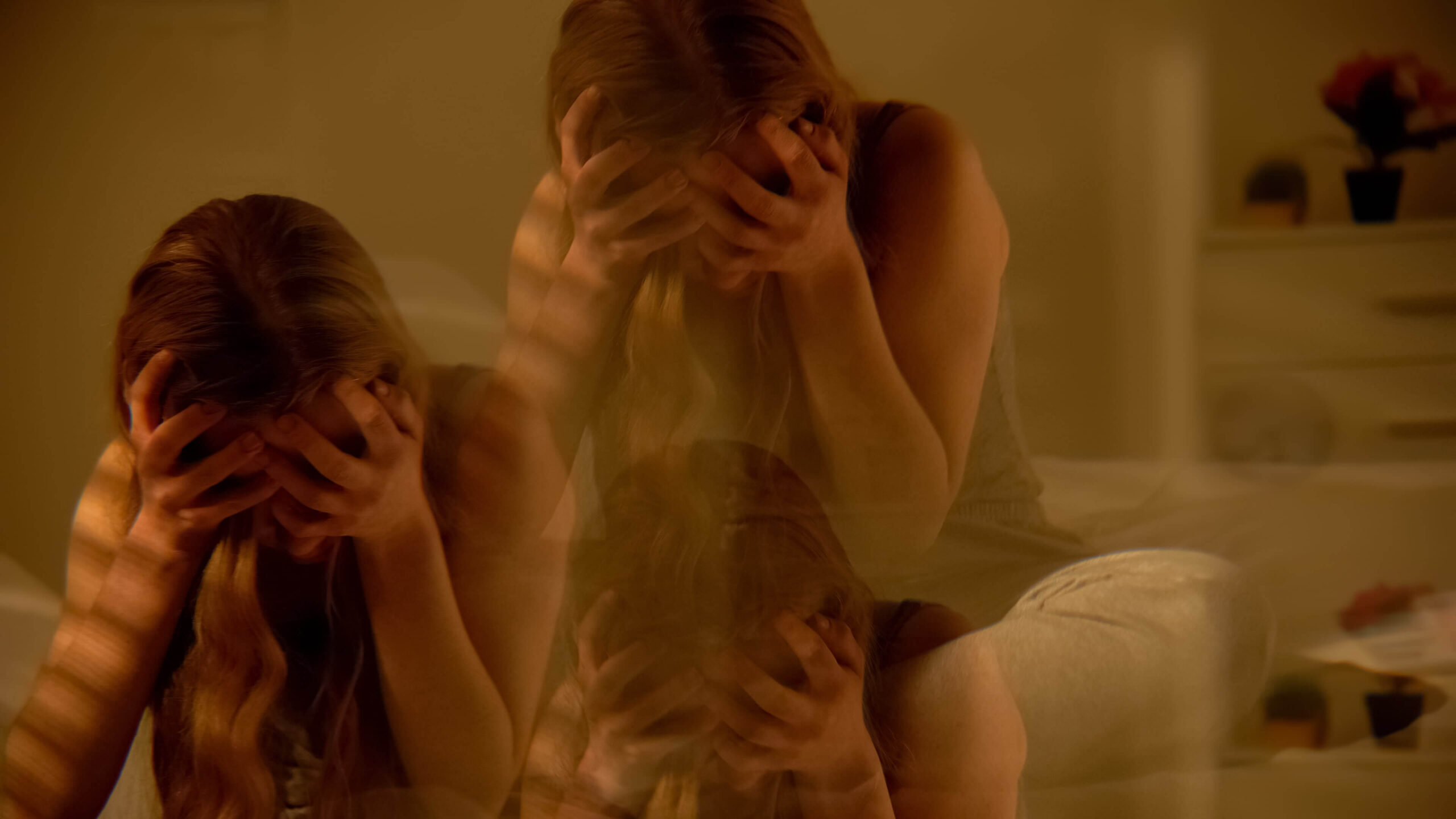Psychotic disorders encompass various mental health illnesses that manifest in an impaired sense of reality. The primary symptom affecting a person with a psychotic disorder is “psychosis,” which may include hallucinations, delusions, paranoia, and confusion. Those suffering from psychosis struggle to discern what is real and what isn’t.
Warning Signs That May Precede Psychosis
According to the National Institute for Mental Health (NIMH), symptoms like those listed below may or may not warn of developing psychosis. While these warning signs may indicate the presence of a psychotic disorder, they may be related to other causes, like sleep deprivation, an adverse reaction to prescription medications, substance abuse, or another medical condition.
A person exhibiting the following symptoms should always consult their doctor or mental health professional. The NIMH warns the following symptoms may precede psychosis:
- A sudden drop in school work or job performance
- Difficulty thinking clearly or concentrating
- Feeling paranoid or suspicious of others
- Withdrawing from friends and loved ones
- Experiencing strange, new feelings or lacking feelings
- Loss of interest in personal grooming
- Difficulty separating reality from non-reality
- Trouble communicating
When a health professional identifies symptoms of psychosis early and quickly initiates treatment, it is easier to learn to manage your symptoms and maintain a good quality of life. Early intervention in the form of Coordinated Specialty Care is discussed below in the treatment section.
Most Common Psychotic Disorders
 Schizophrenia – one of the most commonly diagnosed psychotic disorders. Those with schizophrenia often experience delusions and hallucinations and may also exhibit disorganized thinking, a dull, flat speaking tone, or a movement disorder like catatonia.
Schizophrenia – one of the most commonly diagnosed psychotic disorders. Those with schizophrenia often experience delusions and hallucinations and may also exhibit disorganized thinking, a dull, flat speaking tone, or a movement disorder like catatonia.
Symptoms of schizophrenia usually begin in the late teens to early 20s in men and late 20s to early 30s in women. Behavioral changes and symptoms must last more than six months to fit the criteria for a diagnosis of schizophrenia. Researchers have found a possible connection between marijuana use and the risk of developing a psychotic disorder like schizophrenia.
Schizophreniform disorder – has the same symptoms of psychosis as schizophrenia, but symptoms last less than six months.
Paraphrenia – has symptoms similar to schizophrenia but is typically diagnosed in the elderly. Some researchers believe the disorder may be related to neurologic problems. Although the DSM-5 does not recognize paraphrenia as a psychotic disorder, symptoms often include delusions and feelings of persecution.
Schizoaffective disorder – includes symptoms of both schizophrenia and a mood disorder such as depression or bipolar disorder. When making a diagnosis, doctors specify the disorder as either bipolar or depressive.
Those with schizoaffective disorder often experience paranoia, delusions, and hallucinations in addition to the intense mood swings characteristic of bipolar manic episodes or the depressive episodes experienced in clinical depression.
Brief psychotic disorder – a sudden onset of hallucinations, delusions, or other non-characteristic behavior, often in response to extreme stress or trauma. Episodes are short-lived, lasting less than a month, then the person resumes normal behavior. A person experiencing a brief psychotic disorder may not be aware they are exhibiting unusual behavior.
Shared psychotic disorder – usually occurs between two people who share a close, long-term personal relationship where one has a psychotic disorder or between members of a group who share an intense relationship with a person who has a psychotic disorder, as in a cult.
In either instance, those not diagnosed with a psychotic disorder exhibit symptoms of psychosis, like delusions or hallucinations, similar to those displayed by the person with a psychotic disorder.
Substance or medication-induced psychotic disorder – may occur from the use of or during withdrawal from prescription or illegal drugs or alcohol. As with other psychotic disorders, the individual may experience delusions or hallucinations. This disorder is also called drug or alcohol-induced psychosis or toxic psychosis.
Some experts believe young adults with a substance use disorder are at a higher risk than average for developing psychosis because their brains are not yet fully developed.
Symptoms of psychosis can also occur with bipolar disorder, brain tumors, some major depressive disorders, borderline personality disorder, and dementia.
An In-Depth Look at the Symptoms of Psychotic Disorders
Although symptoms can vary depending on the psychotic disorder and whether a person has a co-occurring condition, hallucinations, delusions, and disordered thinking are common in most cases.
Doctors refer to the most current edition of the Diagnostic and Statistical Manual of Mental Disorders (DSM-5) for guidelines to help diagnose various mental illnesses. According to the DSM-5, criteria used to diagnose a psychotic disorder includes “abnormalities in one or more of the following five domains: delusions, hallucinations, disorganized thinking (speech), grossly disorganized or abnormal motor behavior (including catatonia), and negative symptoms.”
1. Delusions – a person’s belief that something is true despite evidence to the contrary and an inability to change their belief even when faced with conflicting evidence.
Types of delusion disorders may manifest as the following beliefs:
- Persecutory: a person, persons, or organization is “out to get you.”
- Referential: someone or something is sending you secret signals with hidden meanings.
- Somatic: something is physically wrong with your body.
- Religious: you are receiving messages from God or other spiritual messengers.
- Grandiose: you are more gifted or unique than others.
- Erotomania: a person, often well-known, is secretly in love with you, so you stalk or attempt to contact them.
- Jealous: without evidence, you believe your spouse or sexual partner is unfaithful.
- Nihilistic: your body or a body part is missing or has rotted away, or that you, your family, or friends are dead, or feelings of emptiness.
2. Hallucinations – hearing, seeing, smelling, tasting, or feeling things that are not real. Sensations are so vivid the person fully believes they are real. For those with schizophrenia, hallucinations involving sounds or voices are the most common.
Examples of hallucinations include hearing voices or music; seeing a deceased loved one, an animal, or a demonic figure; smelling a fire or rotten odor; an unpleasant taste; or feeling like bugs are crawling on your skin.
3. Disorganized thinking – an inability to organize thoughts or focus attention, particularly evident in a person’s speech. Individuals are easily distracted, switching from one topic to another, making it frustrating for others to try to follow the conversation.
If you suffer from disorganized thinking, you may also exhibit impulsivity and behavior that doesn’t make sense to others, all of which can lead to social isolation.
4. Grossly disorganized or abnormal motor behavior – may include displays of silly, bizarre, or inappropriate behavior, catatonia, loss of inhibitions, or extreme agitation. For example, you may go outside in a snowstorm wearing only shorts and a t-shirt; strip down to swim in a public area; or exhibit catatonia, becoming immobile, frozen, and unresponsive.
Catatonia is a psychomotor syndrome that the DSM-5 also recognizes as a specific mental health disorder. Researchers conclude that catatonia may clarify a diagnosis of schizophrenia, schizoaffective disorder, schizophreniform disorder, brief psychotic disorder, and substance-induced psychotic disorder but may also occur with a primary mood disorder, some neurological diseases, or other medical conditions.
5. Negative Systems – an absence of emotional expression and a complete lack of motivation. Symptoms also include apathy, social withdrawal, and a general lack of self-care. Because signs of negative systems are not as apparent as those involving hallucinations, delusions, or grossly disorganized behavior, you, or others close to you, may not recognize them as signs of a mental disorder.
Negative systems commonly occur in those with schizophrenia but rarely in other psychotic disorders.
Besides those noted in the five categories above, symptoms of a psychotic disorder may include depression, anxiety, and sleep dysfunction.
Causes of Psychotic Disorders
Experts do not point to one specific cause of psychotic disorders, but many believe one or more factors may contribute to their development, including:
- Extreme stress or trauma – such as ongoing physical or mental abuse, sexual assault, or experiencing or witnessing a terrifying event.
- Dysfunction in specific brain circuits – has been identified in those with schizophrenia, indicating damage to the areas regulating thoughts, perception, and motivation. An imbalance in neurotransmitters dopamine and serotonin may also contribute to psychotic disorders.
- Brain atrophy – or shrinking in the frontal or temporal lobes, which may accompany enlargement of brain ventricles, is linked to psychotic disorders.
- Viruses – researchers have linked the human herpes virus HHV-6 to schizophrenia, bipolar disorder, and major depressive disorder.
- Substance use disorders – are significantly higher in those with schizophrenia than in the general population. In fact, about 50 percent of people with schizophrenia have a co-occurring substance use disorder. Although researchers continue to try to determine how or if substance use is related to psychotic disorders, many agree that cannabis use or alcohol can be a causal factor. Recent studies have concluded that daily use of high-potency marijuana “may increase the chances of developing psychosis by nearly five times compared to people who have never used marijuana.”
- Genetic factors – may increase your likelihood of developing a psychotic disorder. Schizophrenia, bipolar disorder, and major depressive disorders tend to run in families. Experts believe a combination of inherited genetic and environmental factors increases the risk of developing a condition involving psychosis.
- Significant life changes or events – a meta-analysis of research investigating the link between life events and psychosis found traumatic events experienced during childhood and traumatic major life events experienced as an adult significantly increased the person’s risk of developing symptoms of psychosis.
- Stress and isolation – may contribute to psychotic disorders and have been identified as probable factors in shared psychotic disorder. Experts believe shared psychotic disorder often involves a strong, dominant personality asserting influence over people with more passive personalities.
Researchers have studied psychotic disorders for decades, trying to pinpoint causes and risk factors. Any of the causes or combinations of causes listed above may contribute to one person’s psychotic disorder. However, most experts agree that genetics and brain chemical changes significantly impact your risk of developing schizophrenia, one of the most common psychotic disorders.
Treatment of Psychotic Disorders
 Treatment of psychotic disorders varies depending on the specific diagnosis and whether you have co-occurring mental health or substance use disorder. Typical treatment protocols include prescription medications and psychotherapy.
Treatment of psychotic disorders varies depending on the specific diagnosis and whether you have co-occurring mental health or substance use disorder. Typical treatment protocols include prescription medications and psychotherapy.
Medication Management
Antipsychotic drugs may quickly reduce symptoms like agitation and confusion but may take several weeks to relieve more complex symptoms such as hallucinations and delusions.
Some people achieve total relief from even the most severe symptoms of a psychotic disorder, while others experience a significant reduction in symptoms, but in most cases, long-term adherence to prescribed medications is critical.
Doctors most often prescribe antipsychotics to treat psychotic disorders. They may also prescribe medication to treat a mood disorder such as major depression, bipolar disorder, or another mood disorder if co-occurring.
Medications known as “typical” antipsychotics act on dopamine receptors in the brain to control symptoms but may cause side effects like tremors, spasms, muscle rigidity, and impaired ability to control movement. Side effects may continue even upon discontinuation of the medication.
In 2016, the Food and Drug Administration (FDA) approved a new generation of 12 antipsychotic medications known as “atypical” antipsychotics, which are serotonin-dopamine antagonists.
These medications include:
- Risperidone
- Olanzapine
- Quetiapine
- Ziprasidone
- Aripiprazole
- Paliperidone
- Asenapine
- Lurasidone
- Iloperidone
- Cariprazine
- Brexpiprazole
- Clozapine
Atypical antipsychotics usually have fewer severe side effects than typical antipsychotics. Side effects may include:
- Sleepiness
- Constipation
- Weight gain
- Increase in cholesterol
- Decrease in sex drive
- Metabolic syndrome
- Temperature sensitivity
- Agitation
Research finds nearly half of those with schizophrenia have a co-occurring disorder like anxiety or depression, which may respond to antidepressants. Doctors often prescribe antidepressant medications to treat low mood, flat affect, or depression, all common in schizophrenia.
Psychotherapy
While medication is key to controlling the symptoms of a psychotic disorder, a treatment plan combining medication and psychotherapy is essential for those with a co-occurring mental health or substance use disorder. Even if you do not have a co-occurring condition, therapy can teach you to recognize and manage triggers to unhealthy behavior and improve your quality of life.
Many treatment centers offer inpatient, outpatient, and intensive outpatient programs. Unless you have severe symptoms or present a danger to yourself or others, an intensive outpatient program can provide the support and guidance you need.
Quality treatment programs offer an integrative treatment plan that includes individual, group, and family counseling and therapeutic approaches proven effective in treating psychotic disorders.
Psychotherapeutic approaches may include:
Cognitive Behavioral Therapy (CBT) – CBT helps identify irrational thought patterns, recognize and manage psychotic symptoms, and increase motivation to undertake activities and self-care. May incorporate a reward system.
Mindfulness-based Cognitive Therapy (MBCT) – MBCT blends CBT with mindfulness practices to reduce stress. A study published in 2020 found “a reduction in negative symptoms of psychosis, and an increase in mindfulness and mindful responding in daily life, from pre- to post group.”
Acceptance and Commitment Therapy (ACT) – ACT is another CBT-based approach that incorporates mindfulness and other practices to help you experience and accept your emotions, even when they’re stressful, and to maintain focus on the present. Randomized studies support the efficacy of ACT “in reducing distress and rehospitalization rates in psychosis.”
Cognitive Enhancement Therapy (CET) – First developed to treat schizophrenia, CET seeks to improve brain function and cognitive processes, including social cognition — how you process information regarding people and social situations. CET also focuses on strengthening vocational capabilities, which may include vocational training, placement, and support.
A study published in the American Journal of Psychiatry evaluated 107 people with severe mental illness, almost half of whom had either schizophrenia or schizoaffective disorder, who had trouble getting or maintaining employment. Study results concluded, “cognitive enhancement interventions can reduce cognitive impairments that are obstacles to work…”
Coordinated Specialty Care – Coordinated specialty care (CSC) is an integrated approach shown to be especially effective as an early intervention to the onset of psychotic symptoms such as delusions or hallucinations. Studies have found when CBTp — cognitive behavioral therapy for psychosis — is initiated at the first signs of psychosis; the individual learns coping mechanisms and tools to manage symptoms and maintain family and social connections.
The CSC treatment model includes the following:
- Shared decision-making framework
- Medication management
- Psychotherapy (typically group or individual CBTp)
- Case management
- Family education and support
- Peer support
- Supported employment and education
Each person responds differently to their prescribed regimen of medication and therapy. Improvement in symptoms may occur quickly for some, while it may take weeks or months for others. Doctors and therapists adjust medications, doses, and treatment plans as needed.
While you cannot prevent a psychotic disorder like schizophrenia, a mental health specialist can help you reduce or manage symptoms. The sooner treatment starts, the better quality of life you will enjoy.
Rising Phoenix offers an intensive outpatient program (IOP) designed to help those struggling with mental health or substance use disorders and co-occurring disorders. We provide expert care centered on the dignity and needs of our clients in a safe, supportive environment.
Intensive outpatient provides a more structured level of care than traditional outpatient programs and is an effective option for many struggling with psychotic disorders. The Rising Phoenix intensive outpatient program incorporates psychiatric evaluation and oversight, individual and group therapy, family and couples therapy, and medication management in a comprehensive twelve-week program.
Upon completing our IOP, we recommend you transition to our outpatient program for continued support with less structure. Working through the outpatient program will help you prepare for a more independent lifestyle.
Contact Rising Phoenix today to learn more.

